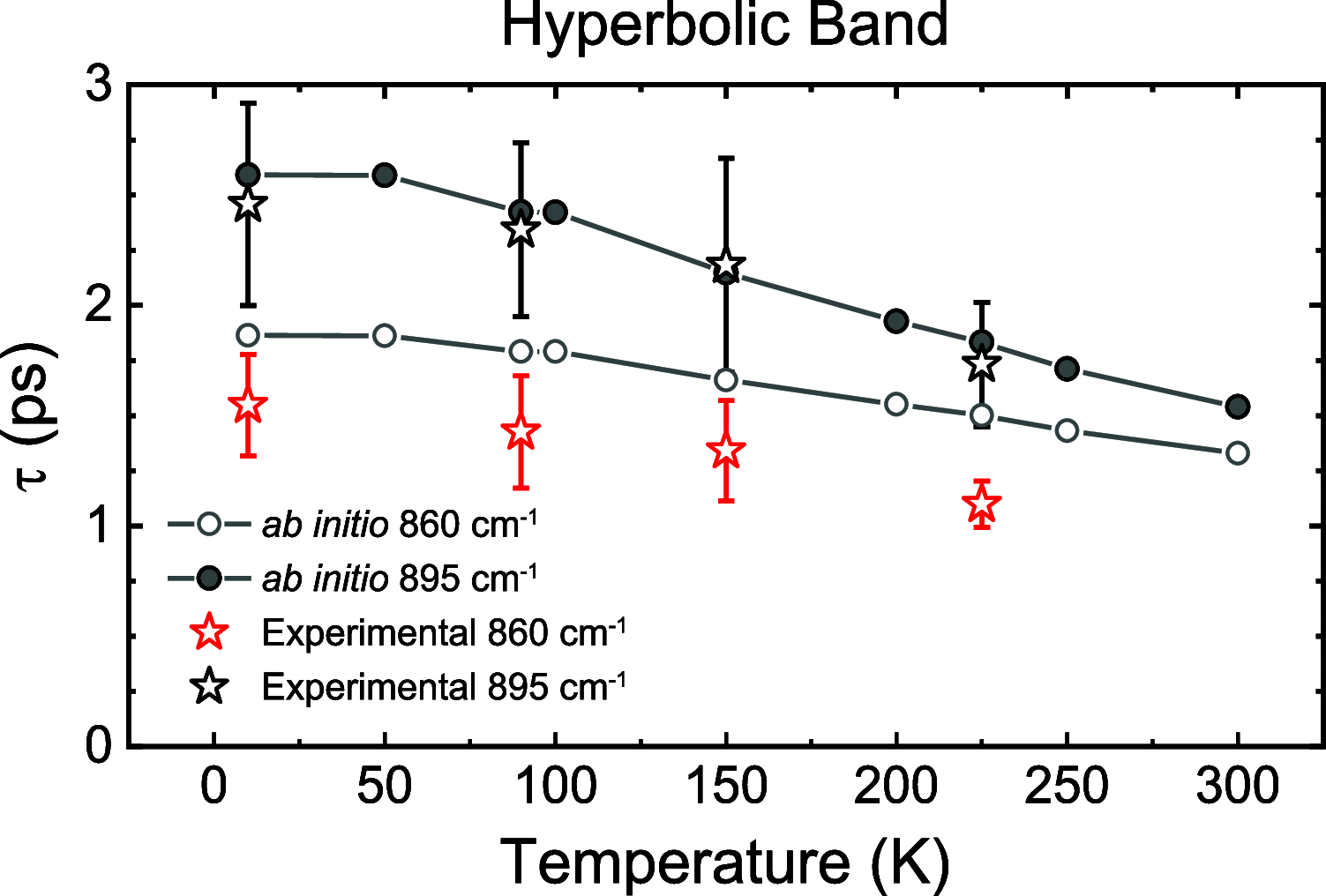Unveiling the Mechanism of Phonon-Polariton Damping in α-MoO3
- PMID: 39310295
- PMCID: PMC11413844
- DOI: 10.1021/acsphotonics.4c00485
Unveiling the Mechanism of Phonon-Polariton Damping in α-MoO3
Abstract
Phonon polaritons (PhPs), light coupled to lattice vibrations, in the highly anisotropic polar layered material molybdenum trioxide (α-MoO3) are currently the focus of intense research efforts due to their extreme subwavelength field confinement, directional propagation, and unprecedented low losses. Nevertheless, prior research has primarily concentrated on exploiting the squeezing and steering capabilities of α-MoO3 PhPs, without inquiring much into the dominant microscopic mechanism that determines their long lifetimes, which is key for their implementation in nanophotonic applications. This study delves into the fundamental processes that govern PhP damping in α-MoO3 by combining ab initio calculations with scattering-type scanning near-field optical microscopy (s-SNOM) and Fourier transform infrared (FTIR) spectroscopy measurements across a broad temperature range (8-300 K). The remarkable agreement between our theoretical predictions and experimental observations allows us to identify third-order anharmonic phonon-phonon scattering as the main damping mechanism of α-MoO3 PhPs. These findings shed light on the fundamental limits of low-loss PhPs, which is a crucial factor for assessing their implementation into nanophotonic devices.
© 2024 The Authors. Published by American Chemical Society.
Conflict of interest statement
The authors declare no competing financial interest.
Figures




References
-
- Hu G.; Shen J.; Qiu C. W.; Alù A.; Dai S. Phonon Polaritons and Hyperbolic Response in van Der Waals Materials. Adv. Opt. Mater. 2020, 8 (5), 1901393 10.1002/adom.201901393. - DOI
-
- Ma W.; Alonso-González P.; Li S.; Nikitin A. Y.; Yuan J.; Martín-Sánchez J.; Taboada-Gutiérrez J.; Amenabar I.; Li P.; Vélez S.; Tollan C.; Dai Z.; Zhang Y.; Sriram S.; Kalantar-Zadeh K.; Lee S. T.; Hillenbrand R.; Bao Q. In-Plane Anisotropic and Ultra-Low-Loss Polaritons in a Natural van Der Waals Crystal. Nature 2018, 562 (7728), 557–562. 10.1038/s41586-018-0618-9. - DOI - PubMed
-
- Zheng Z.; Chen J.; Wang Y.; Wang X.; Chen X.; Liu P.; Xu J.; Xie W.; Chen H.; Deng S.; Xu N.; Zheng Z.; Wang X.; Chen H.; Deng S.; Xu N.; Chen J.; Wang Y.; Chen X.; Liu P.; Xie W.; Xu J. Highly Confined and Tunable Hyperbolic Phonon Polaritons in Van Der Waals Semiconducting Transition Metal Oxides. Adv. Mater. 2018, 30 (13), 1705318 10.1002/ADMA.201705318. - DOI - PubMed
LinkOut - more resources
Full Text Sources
